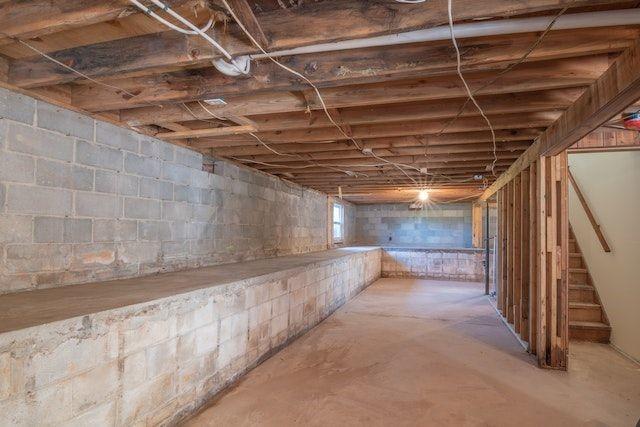Table of Contents
Basements are sometimes underestimated areas that, with a little effort, might serve as an additional bedroom or a shared gathering place for the family. Yes, creating a pleasant atmosphere in an underground space might be difficult.
9 Ways to convert a basement into a living space
Most basements, however, offer excellent real estate for homeowners wishing to increase the value and size of their homes. And for that reason, we want to discuss how you can convert a basement into a living space in a few easy steps. So keep reading to discover how you can transform your basement into your family’s new favorite room.
Research local laws and regulations
Knowing how to convert a basement requires good knowledge of the rules. Therefore, find out what you are allowed to do to convert a basement in your area by speaking to the local building official. They will be able to inform you about the various licenses you will need for your project, as well as residential building codes, zoning rules, and other relevant information.
Furthermore, you can submit a planning consent application on your own or have a licensed architect or specialized basement company submit it on your behalf. They will get information about regional planning policies and previous successful projects in the area.
Inspect your basement
Checking for mold and mildew’s distinctive odor in the air as a first step is a wise decision. Smelling any of them when you walk through a building is a sure sign of moisture present, which leaky pipes, inadequate ventilation, or a bad combination of both can bring on.
Use a humidity checker to assess whether or not there is moisture in the air if you are unsure. Neglecting this stage can be very expensive. Therefore, finding the issue and fixing it is essential to avoid making a costly error or breaking the local building code. In addition, this is also the time to assess whether the basement is adequately vented. If not, installing foundation vents to release warm, moist, and stale air may be necessary.
Measuring is crucial when converting a basement into a living space
You should know the exact size of the area you have available in your basement. However, before you proceed with any further building ideas, you must first determine the height of your basement.
Most building laws and regulations stipulate that a basement must be at least seven feet tall to be suitable for finishing and remodeling. Therefore, measure it adequately to see what can or cannot be done with the space.
At the same time, measuring your basement will also help you better approximate the renovation costs. After all, you should always begin a renovation project with a clear budget. By doing this, you can avoid unforeseen expenses.
Consider the future function of your basement
It’s a good idea to have a vision of the type of living space you desire to create before purchasing materials. Are you planning to make an extra bedroom? Then you need to consider the flooring, lighting, ventilation, etc.
Also, you might want to add a bathroom which implies more work and materials. Will your basement become your kids’ playroom? Then you need to make it safe and cozy.
Your basement stairs need to be easy to use by kids, and the room must be well isolated. Once you have decided on the type of area you want, all that is left to do is gather the materials you’ll need to finish the construction.
Buy adequate materials
The basement is most susceptible to moisture damage because it is underground. So, if you want to remodel your basement, it makes sense to choose waterproof materials. You should avoid drywall, wood frame, and fireboard moldings.
Instead, use water-resistant underfloor systems, waterproof flooring, moisture-proof ceilings, etc. These components reduce the possibility of water damage in your newly constructed space. And even if you have to hire experts to complete some of the tasks, it will be worthwhile.
Add some light
Basements typically demand more light. So if you can add windows large enough for emergency exit codes, do so! Also, if your basement has an exterior entrance, install a sliding glass door to let the sun and air in. The additional natural light will revitalize the area.
On the other hand, increase the charm and functionality of the space while brightening it by adding accent or task lighting. Recessed bulbs work in almost any room. They fit perfectly into your ceiling and don’t create any shadows.
In addition, track lighting not only adds personality but also brightens your basement. Your basement will be well-lit and pleasant thanks to accent features, including task lamps, wall sconces, floor lamps, or table lamps.
Add a splash of color
Another excellent method to open up the space in your basement is to choose paint colors for the walls that are bright and airy. It also allows you to have fun by picking hues that you love but might be a little too daring for the main floor of your home.
That will not only help you make it feel lighter, but it also gives the impression of more space. At the same time, darker hues will absorb more light and make your basement look smaller.
However, before painting the walls or doing any other renovation, remove whatever furniture or items you care about from the basement. If you were using it as a depositing space, you probably have many things inside that you might want to reuse.
Therefore, it might be a good idea to rent a storage unit. There are many benefits of having a unit, but they prove to be particularly useful during renovations. After all, having a space where you can keep your belongings safe from damage is a big plus.
Choose the right flooring
The floor follows the walls when you convert a basement into a living space. As a result, pick a flooring material that complements the room’s function and aesthetic. The typical choice is carpet, but you can choose a low-maintenance material like vinyl or laminate. Because basements tend to retain moisture, wood isn’t the best material.
However, modern vinyl and laminate options provide the same aesthetic as hardwood at considerably lower prices and much greater longevity.
At the same time, don’t install your flooring straight on concrete. Instead, lay down a subfloor. To do this, lay down a layer of insulation, followed by a layer of plywood. Then, you can install the flooring option of your choice.
Don’t overlook the importance of ventilation
Humidity in living areas should be kept below 60% to avoid the dangers of mold. Therefore, in addition to waterproofing and insulation, good ventilation is needed. It is possible to rely on window ventilation, although this method is seasonal and weather dependent.
At the same time, you can extend the HVAC system in your house to assist with basement ventilation. However, many basements need direct humidity removal. One way to do it is by putting exhaust fans in the window or the wall. These circulate the air throughout the entire house while forcing moist air out.
You can set up this to turn on when you turn on the lights or to have sensors that turn on the fans when humidity rises to a specific level.
Closing thoughts on how to convert a basement into a living space
With a modern renovation, your basement can be as warm and friendly as the rest of your house. However, you must consider important aspects such as mold, humidity, insulation, and ventilation.
But once you tackle these issues, you can start envisioning what the space will look like. Your options are infinite, and you just need to think of functionality. From there on, you can use your creativity and convert your basement into a living space that all the family will love.




